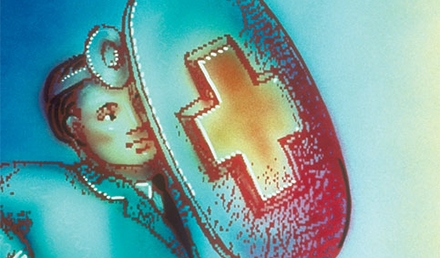Data from the IBISWorld Industry Report Urgent Care Centers in the US, March 2014 show that the urgent care market can be segmented by the source of payment for services. On the basis of data from the U.S. Census Bureau, IBISWorld finds that the main sources of revenue for urgent care are private insurance, Medicare, patients (out-of-pocket payments), and Medicaid. Private insurance accounted for about 54.8% of industry revenue in 2014. Many private insurance companies …
Read MoreMedical Boards: Part 2
JESSICA HOFFMANN, MS-4, and JOHN SHUFELDT, MD, JD, MBA, FACEP The probability that you will receive a certified letter from your medical board informing you about an investigation is relatively low. But one day, you may be one of the unlucky souls who receives such a letter. What do you do? Different boards have different rules about what gets reviewed or investigated and what does not. Some boards are mandated to investigate, at least to …
Read MoreDeveloping Data: February, 2015
Payor Contracts, Discounts, and Provider Signatures
Q. We sometimes have patients come in to our urgent care center with an insurance payor that we do not have a contract with. We do not want to turn them away, but we do want to guarantee our payment. Do we have to submit a claim to the insurance company in such cases? Currently, we offer these patients a self-pay discount, and they pay us in full at the time of service. A. Typically, …
Read More
A Process Approach to Differentiating Your Urgent Care Brand by Ensuring That Patients Leave Satisfied
Urgent message: Rapid growth of the urgent care industry has led to increased competition but little differentiation among urgent care providers, which consumers tend to view as “pretty much the same.” The opportunity for urgent care is thus to foster patient loyalty by creating differentiated brands, which starts by taking a process approach to the patient experience. ALAN A. AYERS, MBA, MAcc Urgent care is maturing into a big business. In 2015, the industry’s nearly …
Read MoreDeveloping Data: January, 2015
Data from the Bureau of Health Professionals show that lack of access to primary care in the United States is driving the heightened demand for urgent care utilization. As of 2013, approximately 60 million individuals in the United States lacked access to primary care, an increase from 56 million in 2007. The lack of access is driven by a number of factors, including inconvenient hours, stringent scheduling requirements, and overcapacity at primary care physician offices. …
Read MoreFracture Codes, Strapping and Splint Application Codes, S9088 Code
Q. When is it appropriate to use fracture codes without manipulation? If a patient comes in with pain in a finger after a fall and an evaluation and management is performed, x-rays are taken to confirm a fracture, the finger is splinted, and the patient is referred to an orthopedist, would that treatment constitute billing for fracture care? If not, what must we do to be able to bill these? A. CPT suggests that only …
Read MoreMedical Boards: Part 1
John Shufeldt, MD, JD, MBA, FACEP I have been practicing medicine for nearly 30 years. I have received countless letters from law firms for records requests and notifying our group or me of an impending issue. I’m kind of numb to it. Conversely, anytime I get a letter from the medical board, I go into SVT. I am sure it is the same way with the physician assistant and nursing boards. You just start thinking, …
Read More
The Sword and the Shield: Best Hiring Practices for Urgent Care Facilities
Urgent message: It is imperative that urgent care centers utilize the various tools at their disposal to recruit the best candidates, while implementing best practices that mitigate the potential for lawsuits. DAMARIS L. MEDINA, ESQ. Urgent care is one of the fastest growing segments of American health care. Historically, many urgent care facilities were considered small businesses because they employed fewer than 15 people, making them exempt from certain hiring discrimination claims under The Federal …
Read MoreDeveloping Data: December, 2014
Data from the Centers for Medicare and Medicaid Services and Aetna show that as the cost of health care treatment continues to rise, urgent care offers a compelling low-cost alternative for delivering care outside the hospital. By transitioning unnecessary emergency department visits to urgent care, $18 billion in savings is projected to be possible. In this issue: Low-Cost Setting as a Driver of Urgent Care Industry Growth
Read More